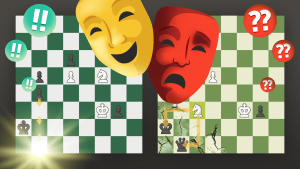
Typical Patterns Everyone Should Know.
Whenever I present a beautiful game in my article, I inevitably see a comment that looks like this: “Wow! Such a beautiful game! I wouldn’t find this fantastic combo in a million years”. From my teaching experience I know that sometimes chess players even become discouraged by brilliant games because they doubt their own abilities to ever play like this. Yes, chess is a very complicated game, but fortunately it is a very simple game as well. What I mean is, it is very difficult to play like Tal or Kasparov, calculating 10 moves deep combinations. But in the majority of the games we don’t need to calculate that far, so if you are good in 3-4 move tactics, you can be a very strong chess player. Unfortunately, for many players it is very difficult to calculate even for 3-4 moves ahead.
I have a good news for them! It is relatively easy to fix this problem. All you need to do is to learn typical tactical patterns and practice a lot. At some point you’ll be so proficient in typical tactical patterns that you’ll see tactical ideas practically in any position!
Today we will learn one such typical tactical pattern that happens only in openings.
In order for this tactical pattern to happen your opponent has to fianchetto his King’s Bishop by moving his pawn to g3 or g6 and he also has to move his King pawn to e4 (or e5 for Black.) As always, I present this pattern as a quiz, because it is my deep belief that if you try to solve a combination on your own ( even if unsuccessfully), you will understand and remember the idea much better.

